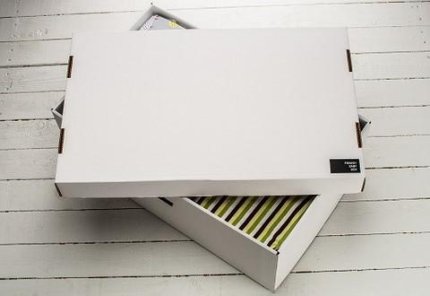For most couples, Valentine’s Day will involve flowers, a romantic meal out or maybe even just a night in cuddling on the couch, but what about those in long distance relationships? How do you spoil each other when distance is an obstacle? The answer of course is a good old parcel. But what should you include and how do you make sure it will be safe when posted?
There are many reasons a couple may be apart on Valentine’s Day; students studying in different cities, professionals who have to work abroad, or those away on a business trip that want to make a gesture before they return home. Whatever the reason, sending gifts is a big part of celebrating Valentine’s Day if you’re apart, and don’t worry – posting gifts can be just as romantic as any gesture made in person.
If you’re thinking of sending a parcel for your loved one this Valentine’s Day there are a few things you should consider before packing and sending it:
1. Make sure you can actually send your intended present through the post
Many items are deemed unsafe or unsuitable to send through the post so always check to make sure first. The Royal Mail has a list of restricted goods on their website which includes the following:
- Alcohol*
- Batteries*
- Electronic devices
- Lighters
- Living creatures
- Magnets
- Perfumes and aftershaves
- Flowers
- Food
- Sharp objects*
- Paint
As well as a list of prohibited goods, which includes the following:
- Items with batteries more powerful that 100W, including some laptops and power tools
- Living creatures
- Goods made in foreign prisons
Rules and laws vary from country to country, and additional checks on whether you can send your package are necessary just to be on the safe side.
*unless packaged correctly. See our section below: Packaging presents correctly.
2. Make sure your intended present can survive the trip
Royal Mail suggest that items should not be sent domestically if they would not survive more than 48 hours in transit – this is likely to include popular Valentine’s presents like chocolates and flowers. Both of these items are only seen as restricted by Royal Mail, but flowers are easily crushed, and chocolates can melt; both of these outcomes are likely if posting internationally.
If you’re intending to send flowers, using a courier service that specialises in flower deliveries is a much safer option.
Similarly, if you’re sending crafts or homemade items you will want to make sure they are packaged correctly so they don’t end up broken.
Packaging presents correctly
Alcohol
Alcohol is a very popular present to send through the post, particularly nice bottles of wine. There are however restrictions on these that many people may not be aware of.
Legally, Alcohol with an ABV of 24% or less has to be wrapped in polythene and sealed with tape. This then needs to be surrounded with an absorbent material and enough protective material to prevent unwanted breakages.
The volume of the bottle in the parcel cannot exceed 1 litre per item. This means that most average wine bottles are okay, but larger wine bottles are not – unfortunately you won’t be able to send that Melchizedek of champagne!
All packages containing glass bottles must be clearly labelled as ‘FRAGILE’. As well at this, the sender’s name and return address must be clearly visible on the outer packaging.
For stronger alcohols (those between 24% and 70% ABV) there is one extra restriction to be aware of: no more than two items can be sent in any one package.
Food Stuffs
Foods are extremely popular around Valentine’s Day (think chocolates and sweets) but they’re actually one of the most heavily restricted things you can send in the post.
As a rule of thumb, all foodstuffs sent through the post must be able to last more than 48 hours in transit; first class postage should always be used.
Like alcohol, all foods must be wrapped in polythene in case of spillages, and must be packed in a strong corrugated cardboard box with adequate protective material.
No frozen water or dry ice is allowed to be sent in the post.
Perfume
Perfume is extremely restricted so it’s good to know the facts before you go sending some to your lover. Firstly, the volume per item must be less that 150ml. Secondly, the perfume must be in its original unopened packaging. Thirdly, it must be wrapped in a strong outer layer of packaging with a generous amount of cushioning to prevent breakages. Finally (and most importantly) the package must clearly have an ID8000 label attached to the outside.
To get an ID8000 label, the package and the goods must be presented to the Post Office counter.
Clothing and other soft goods
When sending clothing to your loved one it’s worth noting that although there aren’t as many restrictions, there are some good pieces of advice worth following.
Firstly, boxes are not necessary for sending clothing, however if you want to reduce the risk of damage a box may be worth considering. Secondly, if you’re sending other items with the clothing, say for instance chocolate, you may want to separate the items with polythene packaging to prevent marks and stains.
In Conclusion
Sending presents through the post is a great way of spoiling your loved one on Valentine’s Day when you can’t be there, but there are many restrictions you must be aware of when sending alcohol, food stuff, perfume and clothing.
By remembering to wrap things properly to avoid breakages, most things will be fine, especially if sent first class.
If in doubt, always ask a member of staff at the Post Office, and always remember: get proof of postage and insurance if the items are expensive or valuable.



















